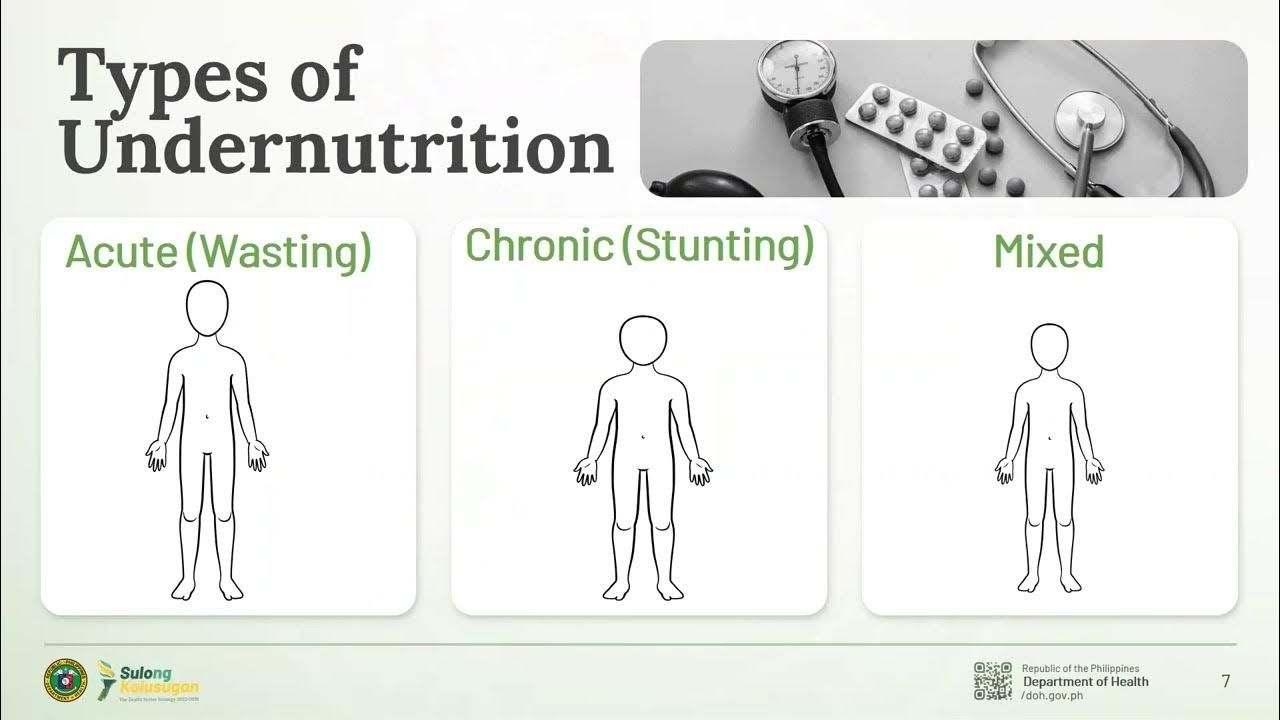Malnutrition: A Hidden Epidemic in Older Adults
Summary
TLDRMalnutrition is a hidden epidemic in the U.S., affecting people of all ages, especially older adults and those with chronic diseases. It can occur in individuals who appear well-nourished, leading to weakened immune systems, muscle loss, frailty, and longer hospital stays. The causes range from age-related changes to chronic illness and restricted diets. Fortunately, malnutrition is treatable through dietary adjustments, nutritional supplements, and community programs. Early recognition of symptoms, like unintended weight loss, is crucial, and collaboration with healthcare teams can help manage and prevent malnutrition.
Takeaways
- 🍽️ Malnutrition is a hidden epidemic in the U.S. that is under-recognized and under-treated.
- 🔄 Malnutrition occurs when the body doesn’t get the right balance of nutrients and calories to stay healthy, and it can affect anyone, not just those suffering from hunger.
- 👵 Older adults are at increased risk due to changes in dietary needs, weakened senses, digestive issues, and nutrient absorption challenges as they age.
- 🩺 People with chronic diseases are vulnerable due to appetite loss, physical difficulty in eating, medication side effects, and dietary restrictions.
- 🏥 Hospitalization can increase malnutrition risk due to restricted diets, decreased appetite, and limited food choices, at a time when the body needs more nutrients.
- 🏡 Living in long-term care facilities raises malnutrition risk due to chronic diseases, social isolation, lack of interest in food, and dependence on staff for eating.
- ⚠️ Malnutrition weakens the immune system, leading to vulnerability to infections, slower healing, frailty, and loss of independence.
- 💪 Protein deficiencies related to disease can cause loss of muscle mass and strength, worsening sarcopenia and frailty in older adults.
- 📉 Malnutrition during hospitalization leads to longer stays, higher infection and readmission rates, worse outcomes, and higher economic costs, exceeding $51 billion annually in the U.S.
- ✅ Malnutrition can be treated by addressing underlying causes, modifying diets, providing supplements, and utilizing social services such as meal delivery and nutrition programs.
Q & A
What is malnutrition, and how does it occur?
-Malnutrition occurs when the body doesn't get the right balance of nutrients and calories it needs to stay healthy. It can happen to anyone, not just people who suffer from hunger or lack access to healthy food.
Who is most at risk for malnutrition in the United States?
-Older adults and people with chronic diseases are at higher risk of malnutrition. Factors like changes in dietary needs, digestive issues, chronic conditions, and reduced appetite all contribute to this vulnerability.
Why are older adults at an increased risk of malnutrition?
-As people age, their dietary needs change, and they may experience a weakening of taste and smell, digestive problems, or difficulty with chewing and swallowing. This, along with reduced absorption of nutrients, puts older adults at higher risk.
How do chronic diseases increase the risk of malnutrition?
-Chronic diseases can reduce appetite, make it physically difficult to shop, cook, and eat, alter metabolism and digestion, and often require dietary restrictions or medications that suppress appetite.
How can hospitalization increase the risk of malnutrition?
-Hospitalization may involve restricted diets, reduced appetite due to illness or procedures, or a lack of appealing food choices. Patients may eat less at a time when their bodies need more nutrients for healing and recovery.
What are the consequences of malnutrition in older adults?
-Malnutrition weakens the immune system, leading to infections, slower recovery, and wound healing. It also causes weight loss and muscle loss, resulting in frailty, falls, broken bones, disability, and loss of independence.
What is sarcopenia, and how is it linked to malnutrition?
-Sarcopenia is the progressive loss of skeletal muscle mass and strength as we age. Malnutrition, especially protein deficiencies, can worsen or cause sarcopenia, leading to serious health consequences.
What is the economic impact of disease-associated malnutrition in the U.S.?
-Disease-associated malnutrition in older adults leads to an economic burden of over $51 billion annually in the U.S., driven by longer hospital stays, higher infection rates, worse outcomes, and increased readmissions.
How can malnutrition be treated?
-Treatment of malnutrition involves a healthcare team addressing the underlying cause, adjusting diets, offering supplements, and providing support services like meal delivery or nutrition counseling. In severe cases, tube feeding or IV nutrition may be necessary.
How can individuals prevent malnutrition during hospitalization?
-To prevent malnutrition, patients should request a nutrition plan before and after hospitalization, consult with dietitians, and ensure access to proper nutrition through meal delivery or community-based programs.
Outlines

Dieser Bereich ist nur für Premium-Benutzer verfügbar. Bitte führen Sie ein Upgrade durch, um auf diesen Abschnitt zuzugreifen.
Upgrade durchführenMindmap

Dieser Bereich ist nur für Premium-Benutzer verfügbar. Bitte führen Sie ein Upgrade durch, um auf diesen Abschnitt zuzugreifen.
Upgrade durchführenKeywords

Dieser Bereich ist nur für Premium-Benutzer verfügbar. Bitte führen Sie ein Upgrade durch, um auf diesen Abschnitt zuzugreifen.
Upgrade durchführenHighlights

Dieser Bereich ist nur für Premium-Benutzer verfügbar. Bitte führen Sie ein Upgrade durch, um auf diesen Abschnitt zuzugreifen.
Upgrade durchführenTranscripts

Dieser Bereich ist nur für Premium-Benutzer verfügbar. Bitte führen Sie ein Upgrade durch, um auf diesen Abschnitt zuzugreifen.
Upgrade durchführenWeitere ähnliche Videos ansehen

Q Ships of World War One

17 Nutrition Care Process on Pediatric Malnutrition

THE ARMY OF SATAN - PART 4 - The Loyal Army | Illuminati - Luciferian - Freemasons

I-Witness: "Mga Anak ng Pugad Lawin", a documentary by Kara David (with English subtitles)

Malnutrition Undernutrition and Overnutrition

The Secret Garden Episode 1 | Stories for Teenagers | @EnglishFairyTales
5.0 / 5 (0 votes)
